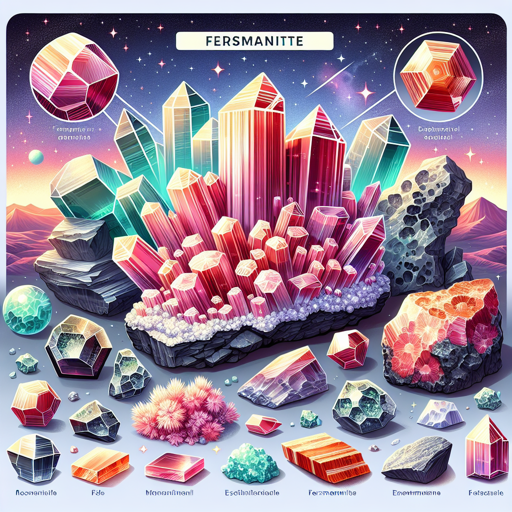A Detailed Guide to Identifying Fersmanite
Discover how to distinguish Fersmanite from similar minerals in this comprehensive guide.

Introduction
Fersmanite, named in honor of the renowned Russian mineralogist Aleksandr Evgen’evich Fersman, is a fascinating mineral that is often mistaken for other similar-appearing minerals. This article aims to provide you with comprehensive insights into Fersmanite’s unique characteristics and how to distinguish it from similar minerals.
The Distinct Characteristics of Fersmanite
Fersmanite is a rare titanium niobate mineral with a unique dark brown color and a crystal structure that forms tabular crystals. Its distinguishing features include its hardness, which ranges from 5 to 5.5 on the Mohs scale, and its specific gravity, which is approximately 4.78.
Comparing Fersmanite with Similar Minerals
There are several minerals that closely resemble Fersmanite, such as Rutile and Brookite. The table below provides a comparison of their distinct characteristics:
| Mineral | Color | Hardness | Specific Gravity |
|---|---|---|---|
| Fersmanite | Dark Brown | 5-5.5 | 4.78 |
| Rutile | Reddish-Brown | 6-6.5 | 4.23 |
| Brookite | Brown to Black | 5.5-6 | 4.08-4.18 |
A Quote to Ponder
As the renowned geologist Charles Darwin once said, “The love for all living creatures is the most noble attribute of man.” This encapsulates the spirit of every geologist’s journey, as we strive to understand and appreciate the beauty of each mineral we encounter.
The Fascinating World of Fersmanite
Fersmanite, discovered in 1922, is primarily found in the Lovozero Massif, Kola Peninsula, Russia. Despite its geographical limitation, it has managed to spark the curiosity of geologists worldwide due to its distinctive features and rare occurrence.
Identifying Fersmanite
When identifying Fersmanite, pay close attention to its crystal structure, hardness, and specific gravity. Its dark brown color, tabular crystals, and unique hardness make it distinguishable from similar minerals. Keep in mind that a precise identification often requires a combination of tests, including visual inspection and physical property tests.
Conclusion
Identifying Fersmanite can be a captivating journey into the intricate and fascinating world of minerals. With its unique characteristics and captivating history, Fersmanite serves as a perfect example of the complexity and diversity of Earth’s mineral resources.
Remember, the key to successful mineral identification lies in careful observation and a deep understanding of each mineral’s unique properties. So next time you come across a dark brown, tabular crystal, you’ll know how to tell if it’s a rare specimen of Fersmanite or not.
For more information, you can refer to the Mineralogical Society of America’s page on Fersmanite.